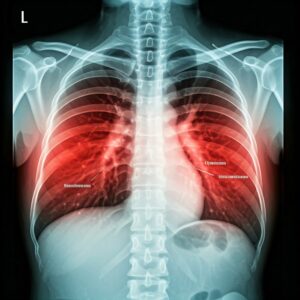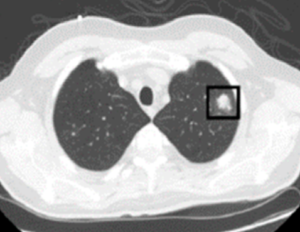After reviewing each component participating in respiratory activities, let’s attempt to unravel the mystery of breathing difficulties. In this post, I will provide you with a bird’s-eye view of the mechanism behind breathing difficulties. My goal here is to demonstrate how you can apply the concepts you’ve learned from previous posts to address specific questions. Ultimately, you will be able to identify the root causes of your breathing problems.
Breathing itself is a physical process. The core issue lies in whether an adequate amount of air can enter the lungs within a certain timeframe to meet the body’s physical demands. What does this mean? After birth, humans rely on breathing to take in oxygen and expel carbon dioxide (CO2). Spontaneous breathing is an unconscious, natural process that supports gas exchange during periods of rest and sleep. While we can intentionally hold our breath or alter our breathing rhythm, natural respiratory activity doesn’t require conscious regulation. Physical demands dictate respiratory activity, determining the depth and rate of our breaths.
During exercise, muscles are in a heightened state of metabolism, consuming more energy and oxygen and generating additional byproducts, including CO2. To enhance respiratory activity, the respiratory center can simply increase the frequency of inhalations. Additionally, when central chemoreceptors detect changes in pH levels related to CO2 production, deep inhalations occur to ensure a larger tidal volume (the volume of each breath).
In clinical practice, doctors use PaCO2 (arterial partial pressure of CO2) to assess the level of CO2 in the blood and evaluate ventilation status. CO2 is soluble in the blood and can easily pass through the barrier between the blood and alveoli. The sole factor influencing PaCO2 is the gradient of partial pressure of CO2 (PCO2) between the blood and alveoli. Effective ventilation efficiently removes CO2 from the alveoli, lowering PCO2 in the airway and facilitating the diffusion of CO2 from the blood. That’s why when PaCO2 is high, respiratory rate and/or the depth of breathing need to increase, and vice versa.
In addition to CO2 clearance, oxygenation is another crucial function of respiratory activities. Achieving adequate oxygenation is a complex process that involves multiple components, such as the airway, alveoli, blood vessels, and red blood cells (RBCs). Sufficient ventilation is the first step in ensuring that alveoli contain an ample amount of O2, allowing RBCs to uptake O2 and release CO2 when they reach the blood-air barrier. If, for any reason, the oxygen levels in the alveoli fall below what RBCs require, the respiratory rate must increase to deliver more O2 within a specific timeframe, or deeper breaths are necessary to meet the body’s needs. Essentially, our body relies on the levels of O2 and CO2 inside and outside of the body to determine the requirements for respiratory activities.
Next, we are going to focus on each anatomical component and dissect how they can contribute to breathing difficulties. Since breathing revolves around air movement, a clear passage is fundamental. The passage in question includes the nasal cavity, throat, and windpipe. Breathing becomes difficult when your nose is congested or if you are experiencing choking sensations. Many individuals suffer from seasonal allergies, which lead to symptoms such as a runny or stuffy nose, sneezing, and watery or itchy eyes during pollen season. They can pinpoint the exact months when their breathing problems begin. Once the stuffiness in their nose resolves, their breathing immediately improves.
Airway: There are different sizes of airways in the lungs. As they approach the chest wall, these airways taper. Cigarette smoking leads to chronic inflammation in the airways, especially the smaller ones. Consequently, chronic coughing is common among smokers, often more pronounced in the morning and during cold seasons. This inflammation also prompts airway cells to produce excess secretions and attracts immune cells to the lungs. This is why smokers often cough up thick phlegm. Over time, the damage caused by this inflammation can become permanent, resulting in a narrowing of the airways, increased airway resistance, decreased lung function, and breathing difficulties.
Lung Parenchyma: If you think of the airways as branches, the lung parenchyma is like the leaves. It provides the interface for gas exchange to occur. In conditions such as pneumonia, a specific area of the lung is affected by bacteria or viruses, causing damage to the gas exchange interface, leading to reduced oxygen intake into the blood. This results in difficulty breathing and a drop in oxygen levels. Other lung parenchymal diseases, like lung fibrosis and emphysema, function similarly to pneumonia, impairing effective gas exchange and causing low oxygen levels.
Blood Vessels: Lungs contain numerous blood vessels running alongside the airways. As discussed in “How Does Breathing Work?” whenever oxygen levels drop, breathing becomes difficult. Blood clots in certain blood vessels can hinder oxygen uptake, and the unaffected areas must compensate, leading to rapid and deep breathing, and ultimately, difficulty breathing. Additionally, some diseases can increase the pressure in pulmonary arteries, a condition known as pulmonary hypertension. This condition often goes unnoticed because it requires invasive diagnosis. Pulmonary hypertension results in significantly low oxygen levels in the blood, severe impairment of physical capacity, and a high mortality rate.
Heart: In addition to lung diseases, abnormal heart function is a common cause of breathing difficulty. This primarily stems from a mismatch between oxygen supply and demand. For instance, congestive heart failure weakens the heart’s contraction, reducing blood supply to other organs. During physical activity, the demand for oxygen increases, causing an uptick in breathing rate. However, the heart’s output doesn’t rise adequately due to its weakened function. This leads to a deficiency of oxygen in the body, necessitating faster breathing and resulting in difficulty breathing.
Muscles: Muscles are the driving force behind breathing. Functional respiratory muscles are crucial to ensuring the lungs receive an adequate supply of air to meet the body’s physical demands. When respiratory muscles fail to effectively follow the commands from the central respiratory center, ventilation becomes inadequate, leading to shortness of breath.
In conclusion, breathing difficulty is a complex phenomenon primarily rooted in the mismatch between oxygen supply and demand. The responsibility for breathing difficulties doesn’t solely lie with the lungs; the airways, heart, and respiratory muscles also play crucial roles.




